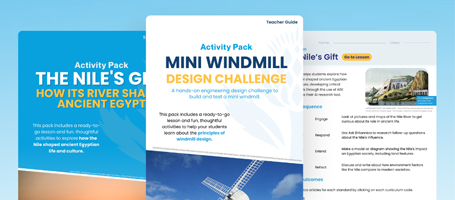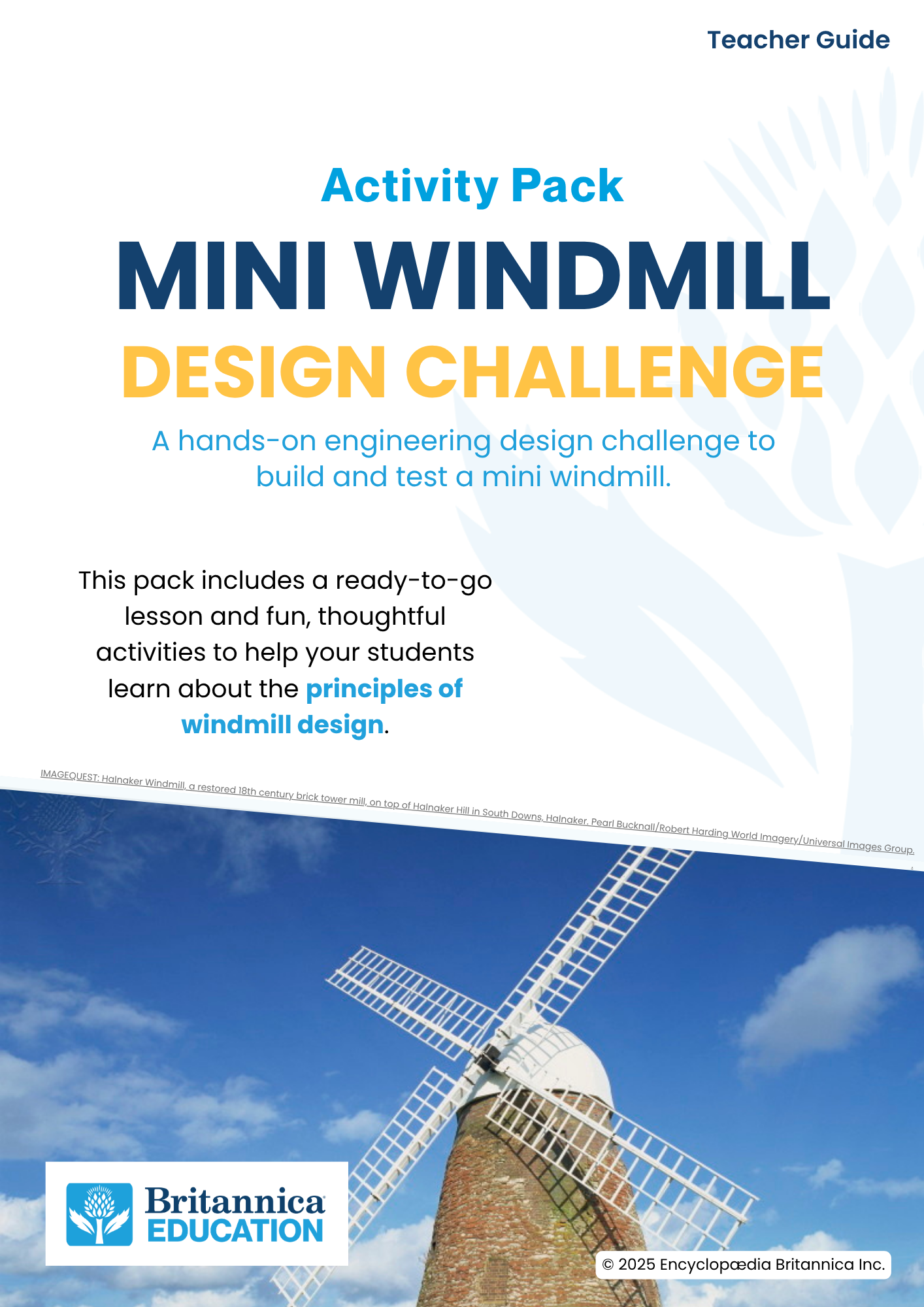What’s Inside This Lesson
Students apply wind-force mechanics and the Engineering Design Process (EDP) to design, build and test mini windmills that convert airflow into rotary motion to lift a paper-clip “water canister.”
Lesson Outcomes
-
ACARA Version 9.0
Students will:
- Explain that when the kinetic energy of an object changes, energy is transferred to or from the object (AC9S4U03, AC9S6U03)
- Describe how kinetic energy from the wind moves to the windmill blades, allowing the blades to perform work, like lifting a load (AC9S4U03, AC9S6U03)
- Recognise the importance to clearly define criteria (what the solution must achieve) and constraints (limitations like time or materials) when solving an engineering problem (AC9S4H02, AC9S5H02, AC9S6H02)
Students can:
- Clearly state the criteria and limitations needed for a successful design solution (AC9S4I02, AC9S5I02, AC9S6I02)
- Follow a step-by-step procedure to build a model windmill using simple materials (cup, straw, coffee stirrer, safety pins) (AC9S4I03, AC9S5I03, AC9S6I03)
- Use the data they collect during testing to decide how to make their engineered system better (AC9S4I05, AC9S5I05, AC9S6I05)
- Explain how the process of designing, testing, and improving a model windmill is similar to the work engineers do on real wind turbines (AC9S4H02, AC9S5H02, AC9S6H02)
-
Victorian Curriculum Version 2.0
Students will:
- Describe how kinetic energy from the wind moves to the windmill blades, allowing the blades to perform work, like lifting a load (VCSSU081, VCDSTC034)
- Recognise the importance to clearly define criteria (what the solution must achieve) and constraints (limitations like time or materials) when solving an engineering problem (VCSHE080, VCDSCD038)
Students can:
- Clearly state the criteria and limitations needed for a successful design solution (VCSIS083, VCDSCD028)
- Follow a step-by-step procedure to build a model windmill using simple materials (cup, straw, coffee stirrer, safety pins) (VCSIS084, VCDSCD030)
- Use the data they collect during testing to decide how to make their engineered system better (VCSIS086, VCDSCD031)
- Explain how the process of designing, testing, and improving a model windmill is similar to the work engineers do on real wind turbines (VCSHE079, VCDSCD041)
-
NSW Curriculum
Students will:
- Describe how kinetic energy from the wind moves to the windmill blades, allowing the blades to perform work, like lifting a load (ST3-8PW-ST)
- Recognise the importance to clearly define criteria (what the solution must achieve) and constraints (limitations like time or materials) when solving an engineering problem (ST3-2DP-T)
Students can:
- Clearly state the criteria and limitations needed for a successful design solution (ST3-1WS-S)
- Follow a step-by-step procedure to build a model windmill using simple materials (cup, straw, coffee stirrer, safety pins) (ST3-2DP-T)
- Use the data they collect during testing to decide how to make their engineered system better (ST3-1WS-S)
- Explain how the process of designing, testing, and improving a model windmill is similar to the work engineers do on real wind turbines (ST3-2DP-T)
Request Download
Please fill in this form to access a download link for the resource.

